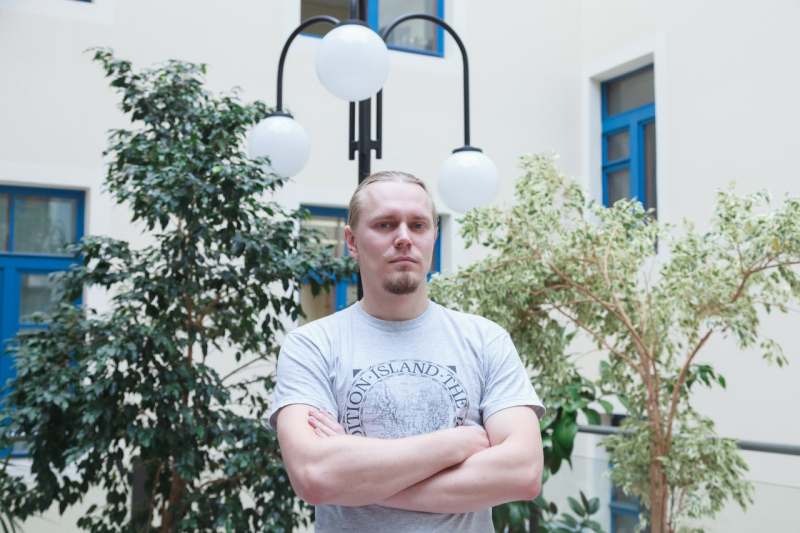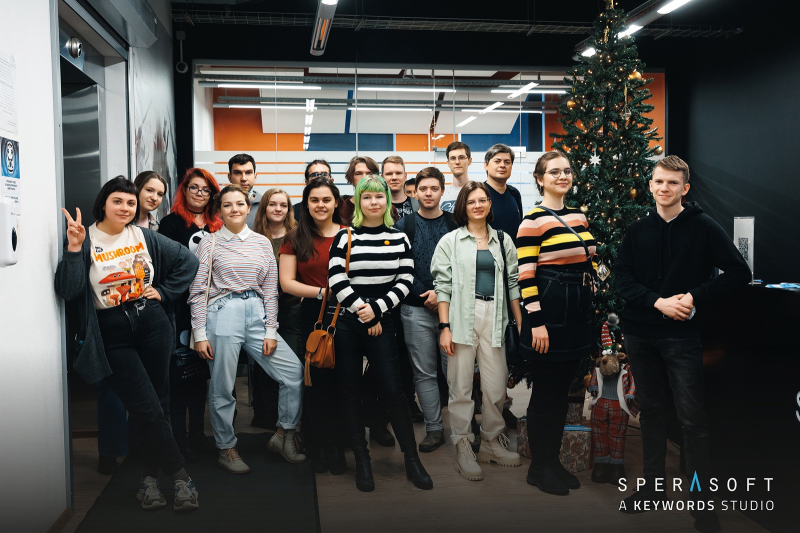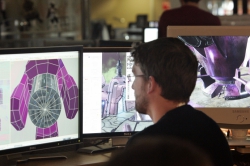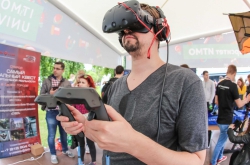The Game Development Technologies Master’s program was launched in 2017 at the School of Translational Information Technologies. The program offers its students two specializations: Video Game Design, which delves into game design and various content generation methods, and In-Game Technologies, which focuses more on the technological aspects of game development. The program’s approach to learning involves close collaboration with representatives of the game industry, including Sperasoft, a leading game development company. Andrey Karsakov, the head of the Master’s program, spoke to us about its two-year partnership with the studio.
Andrey Karsakov. Photo by ITMO.NEWS
– What have been the results of your partnership with Sperasoft in the past year?
– In the spring, we completely retooled a course to make it more focused on the specifics of game development at major studios (such as Sperasoft). These are techniques used in “mature” development and not the kind you’d see at small studios or in mobile games. We also collaborated on changes to the content of various other courses: on gaming AI, engine architecture, graphics, and algorithm development and analysis. We’ve gone over the platform-dependent specifics of game development, various graphical APIs, and the intricacies of using proprietary game engines. When our students are asked to build their own engines as part of their studies, they face the same issues that they’ll one day encounter when working at major companies.
– How can ITMO students and graduates do an internship or get a job at Sperasoft?
– Some of our students were recruited pretty much as soon as they defended their theses. Some were invited in for internships when working on joint research. Some held junior positions at other companies before going over to Sperasoft. The company welcomes recent graduates even though the entry bar is quite high. But our students, as long as they’re interested and motivated, have no issues getting a job there.
Recently, Sperasoft launched new internship programs that allow our students to receive practical training credit while participating in them. But we have an agreement with the company that any of our students who intern or work there must be allowed to complete their studies at ITMO.
ITMO students on a tour of Sperasoft's St. Petersburg offices. Credit: vk.com/sperasoft
– What kinds of positions do ITMO students hold at Sperasoft?
– We collaborate most closely with the engineering department, where our students work as developers. But there are a few of them who work as technical artists (special effects development). One of our students was hired as a game designer, even though it’s rare for Sperasoft to hire external talent for such positions.
– How does this partnership benefit the two sides?
– AAA games are the first field of application for the latest advances in computer science. There’s a constant competition for the best graphics, the best physics, the best AI. You need to entice the players while making sure your game can work well on high-end as well as low-end PCs.
Major companies have a huge advantage: they can afford to rapidly complete the integration cycle, starting from research and hypothesis verification to testing and release. This increases the value of the end product and may even reduce the cost of development. That’s why gamedev is one of those industries that push computer science forward in its practical form. At any major international conference, many of the reports are on research done in collaboration between universities and giants of the industry.
“Our specialists take part in entrance exams and defenses of term papers and graduation theses; they work with the faculty to maintain the curriculum; finally, they share their experience with the students and provide feedback. Having this kind of in-depth knowledge will give graduates a better chance of landing a job in the game development industry,” says Igor Smirnov, a senior engineering manager at Sperasoft.
Igor Smirnov. Photo courtesy of subject
Bonus: how to get an internship at Sperasoft
As part of its partnership with ITMO, Sperasoft offers internships in various fields for students aged 18 and above. Special preference is given to Master’s students or fourth-year Bachelor’s students. The selection is carried out based on the applicant’s CV and portfolio. The company’s representatives have shared a few tips on how to best put those documents together:
- Start your CV with your name and a link to your portfolio;
- If you already have some industry experience, describe its length and the projects on which you’ve worked. Then, describe the position and responsibilities that you held there;
- Next, list the software you’re proficient in and your professional skills;
- At the end, feel free to include any other education or online courses you’ve completed.
Remember to follow Sperasoft on Instagram to learn about upcoming internship programs and more.




